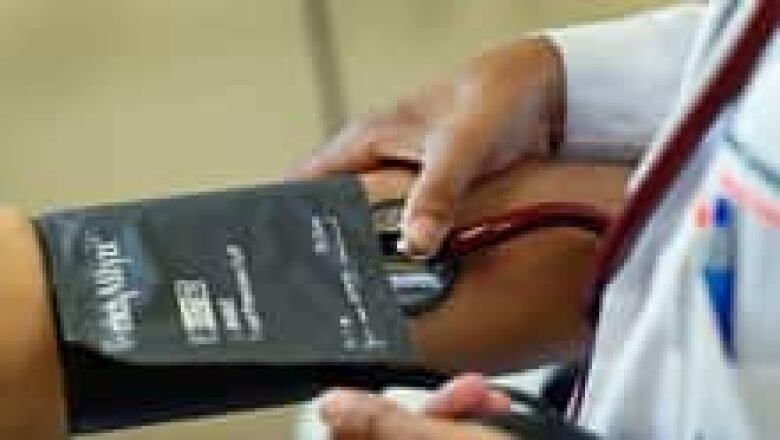Get to hospital faster: MDs to stroke patients
Too few Canadians who have suffered a stroke get to hospital quickly enough for the medical emergency, according to a new report.
The Canadian Stroke Network released the report onthe quality of stroke care in the country on Thursday in Ottawa with recommendations for the public, caregivers and policymakers aimed at preventing, treating and enhancing recovery from stroke.

People with an ischemic stroke should get to a hospital within 4 hours of first noticing stroke symptoms for the best chance of recovery.
But the stroke network found two-thirds of people with stroke waited longer to seek care.
Awareness of stroke warning signs and control of risk factors is also lacking, the report's authors said.
Stroke warning signs include:
- Weakness: Sudden loss of strength, numbness in face, arm or leg, even if temporary.
- Trouble speaking: Sudden difficulty talking or understanding spoken language, even if temporary.
- Vision problems: Sudden trouble with vision, even if temporary.
- Headache: Sudden severe or unusual headache.
- Dizziness: Sudden loss of balance, especially with any of the above signs.
If a stroke is suspected, call 911 for an ambulance.Quickactionis needed to assess and treat ischemic stroke, yet many don't consider it a medical emergency, the stroke network said.
Hypertensionis found in 64 per cent of patients with stroke, and more than one-third have experienced a previous stroke or transient ischemic attack (TIA), a "mini-stroke" that occurs when a blood clot blocks an artery, shutting off the brains blood supply that resolves itself without permanent brain damage.
The stroke network calls on caregivers in part to assess patients' blood pressure regularly, take advantage of existing Telestroke programs and work with patientsto develop personalized rehabilitation plans.
For policymakers, the focus should be on continuing to encourage health lifestyles, promoting public awareness campaigns, eliminating cross-provincial barriers to using Telestroke and monitoring stroke care.
The Canadian Stroke Network made up of university and hospital-based researchers gathered data on 38,210 stroke patients from 295 hospitals across the country to prepare the report.
With files from The Canadian Press












_(720p).jpg)


 OFFICIAL HD MUSIC VIDEO.jpg)
.jpg)



























































































